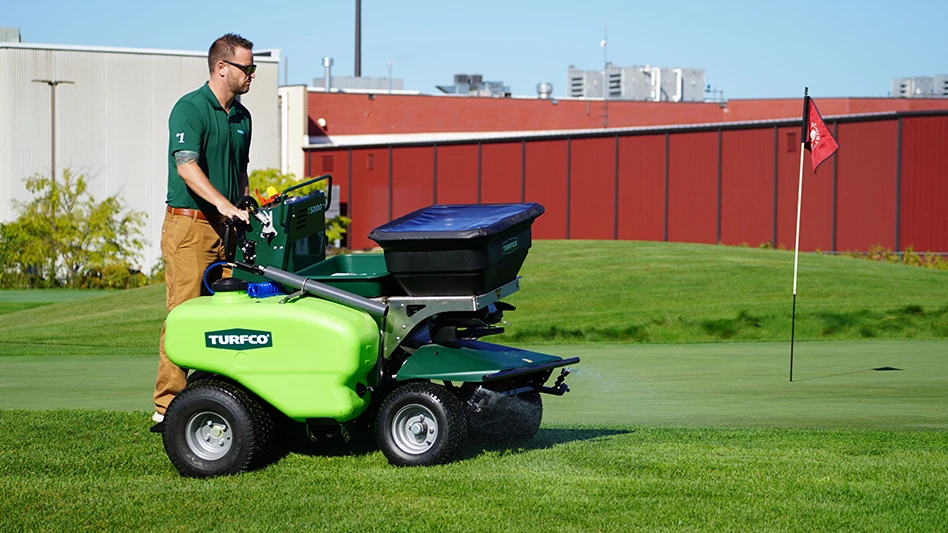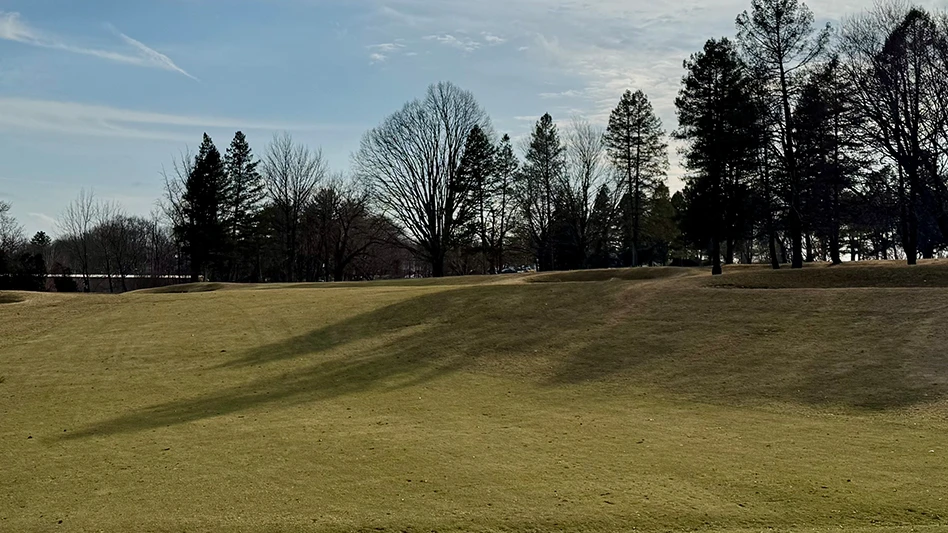 Top: a white grub speared from one of the aerification processes. Bottom: the tines of First Products UA 60 Area-vator. Top: a white grub speared from one of the aerification processes. Bottom: the tines of First Products UA 60 Area-vator. |
Rather than targeting adult beetles, consider controlling the grubs feasting on your turf’s roots with aerification.
In fact, this is a concept Benjamin McGraw, Ph.D., associate professor of golf and plant sciences at the State University of New York (SUNY)-Delhi, has been studying since 2009 and his research has produced some intriguing results.
There’s some solid reasoning behind this research. For example, larvae typically damages turfgrass in the fall, the same time superintendents are going through the aerification process.
“We’ve wondered what the impact of running these machines over the area would have on something that was feeding close to the surface,” McGraw says. “So the added benefit (of the research) is that we were able to document some pretty good control of larvae at the same time as doing these practices that are done to reduce compaction and all these other beneficial things outside of pest control.”
McGraw looked at three different types of cultivation treatments for his study: hollow- and solid-tine aerators using a Toro ProCore 648, solid vibratory tines using First Products UA 60 Area-vator, and air-injection systems using a Cambridge Liquid/Air Injection Systems (R).
The hollow- and solid-tine aerators move vertically, and some inject a core while others have a spike to dig directly into the ground. The solid vibratory tines rotate on a drum and vibrate side-to-side. The air-injection systems injected air, liquids or a solid material into the soil at a high pressure, fracturing the soil.
Of the three types, McGraw found the last two did not work as well as they had hoped. “Once the (solid vibratory tine) goes in the ground, it kind of wiggles and we thought it might crush some of the grubs off to the side,” McGraw says. “That didn’t really work too well, and it was very traumatic to the turf.”
As for the air-injection systems, they did kill grubs, but McGraw did not find it to be overly measurable in the field.
“It didn’t really look any different from the untreated control plots” he says.
The traditional method of hollow- and solid-tine aerators seemed to have the most impact on controlling the grubs. “We were able to document some pretty moderate to high levels of control just by aerifying, either in single or multiple passes over the turf,” McGraw says.
But before you go out and dump your pesticides, you need to consider the variables.
“It’s variable,” McGraw says. “From one year in the field to the next you might get great control and you might get poor control. It is dependent on several factors like grub spacing and density, as well as aerator tine diameter, tine spacing, and frequency.”
However, McGraw does have confidence that his findings will be effective. “Will it give you 100 percent knockdown? No way,” he says. However, the potential exists to get a level of control comparable to that of applying chemical insecticides curatively, thereby eliminating an application.

Explore the April 2013 Issue
Check out more from this issue and find your next story to read.
Latest from Golf Course Industry
- Atlanta Athletic Club approves funding for master plan
- Maximizing Cultural Practices and Agronomic Benefits with Minimal Surface Disruption
- Real Answers about Spray Nozzle Choices
- From the Course to the Factory: How Customer Insights Drive Innovation
- New & Proven Enzyme Strategies for Sprayable Thatch Management
- Innovating Tomorrow: Wittek’s New Products & Industry Staples
- PBI-Gordon introduces new field development team
- The Cabot Collection announces move into course management






